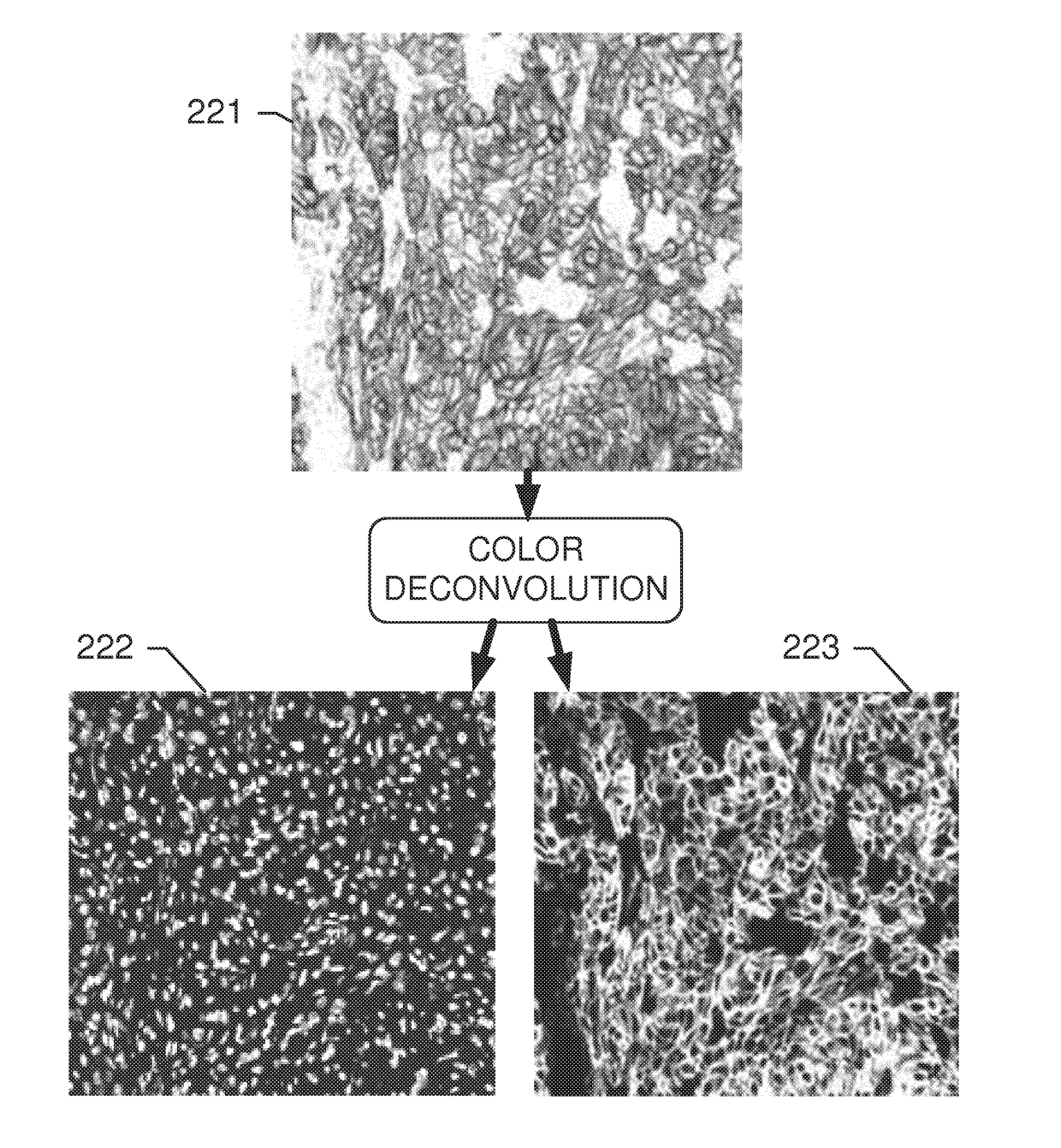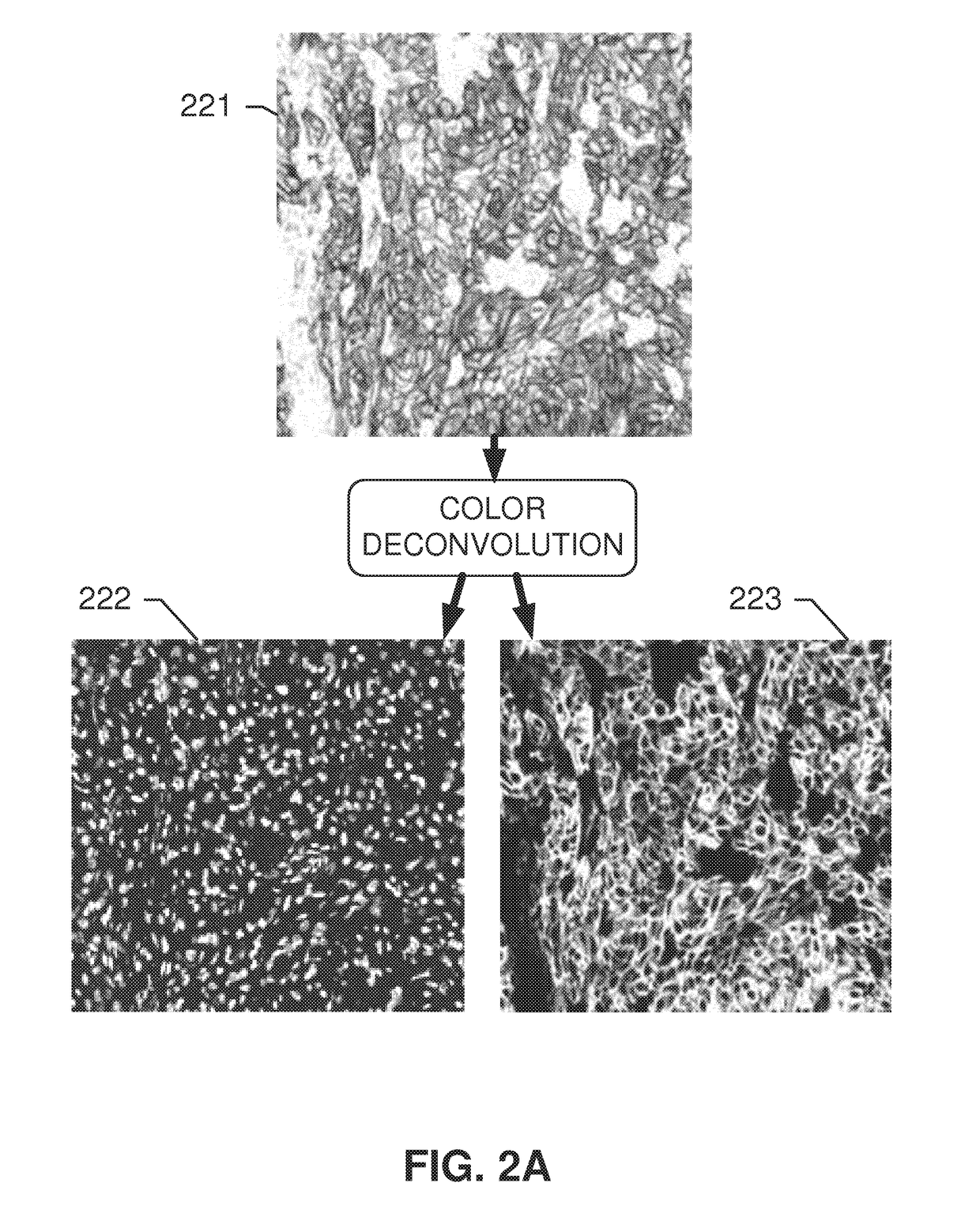Medical image analysis for identifying biomarker-positive tumor cells
a tumor cell and image analysis technology, applied in image analysis, image enhancement, instruments, etc., can solve the problems that human observers cannot perform quantitative analysis of whole slides, such as counting target objects, or quantitation of slides, and achieve the effect of stable segmentation results
- Summary
- Abstract
- Description
- Claims
- Application Information
AI Technical Summary
Benefits of technology
Problems solved by technology
Method used
Image
Examples
Embodiment Construction
[0148]Systems and methods disclosed herein relate to an automated image analysis algorithm and workflow to score digitized slides, having biological specimen or specimens thereon, stained with IHC assays which stain the membranous and cytoplasmic regions. The present invention is described, for exemplary purposes, in connection whole NSCLC slides that are stained with c-MET IHC assay. However, the disclosed operations may be applicable to any other combinations of membranous and cytoplasmic stains and nuclei counterstains as will be evident to persons having ordinary skill in the art in light of this disclosure.
[0149]A “counterstain” can be, for example, a stain for staining nuclei. For example, the counterstain can be of a contrasting color in respect to the stain used to color the membrane and cytosolic components comprising the biomarker. According to embodiments, the nuclei are made visible only by the counterstain, not by the stain used for staining the biomarker. According to ...
PUM
 Login to View More
Login to View More Abstract
Description
Claims
Application Information
 Login to View More
Login to View More - R&D
- Intellectual Property
- Life Sciences
- Materials
- Tech Scout
- Unparalleled Data Quality
- Higher Quality Content
- 60% Fewer Hallucinations
Browse by: Latest US Patents, China's latest patents, Technical Efficacy Thesaurus, Application Domain, Technology Topic, Popular Technical Reports.
© 2025 PatSnap. All rights reserved.Legal|Privacy policy|Modern Slavery Act Transparency Statement|Sitemap|About US| Contact US: help@patsnap.com



